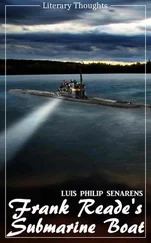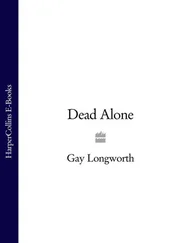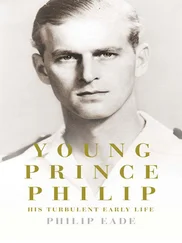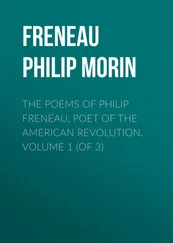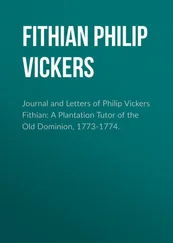Although Muscovy’s department of foreign affairs, the Ambassadorial Office, was not formally established until the 1500s, the late 1400s saw the foundation, of Muscovy’s foreign service and intelligence-gathering system. It was to develop into an essential and most effective instrument in the building of Russian empires.
Military development was also proceeding apace. Indeed Ivan’s envoy to the Duke of Milan in 1486 took care to make it clear that Muscovy boasted a well-armed and well-organized army. The cavalry were plentifully supplied with horses from Tatary as well as Russia. They carried scimitars as well as lances, and wore light body armour like that of the Ottoman sultan’s Mamelukes. The infantry, by contrast, were equipped with the latest Western technology, including the latest type of crossbow out of Germany and firearms. Indeed the Grand Prince’s servicemen had ‘grown accustomed’ to using firearms identified as matchlock arquebuses. 23By the beginning of the sixteenth century as many as a thousand of these could be deployed in an operation, and soon they were being distributed among units at commanders’ discretion to provide firepower where needed. They were used to defend Pskov against attacks by the Livonian order of the Knights of the Sword, and on the southern frontier against incursions by Crimean Tatars. 24Ivan also invited German gunsmiths to Moscow to establish firearms manufacture and save the cost of importation.
Moscow had been casting cannon since the 1300s, and the size and effectiveness of its artillery had grown incrementally thereafter. 25Cannon had pounded the walls of Novgorod in the 1470s, helping to reduce the city to submission, but their deployment in battle and at sieges required effective logistical support. Guns were transported on rafts along river routes, but were also hauled overland by teams of men and animals; lines of supply were guarded by manned posts. All this required a considerable organizational effort, and the mobilization of the necessary manpower and equipment along the lines of march.
At the same time, the nature of warfare against Tatars in areas where the Russian population was relatively thin on the ground and the enemy highly mobile required a constant state of high alert and led to a less conventional military response. It was in the 1400s that the government began to retain the services of independent or renegade Tatar groups like those of Riazan to give early warning of a raiding party’s approach and to slow down their advance. This was the origin of the Cossack hosts, which were to play so significant a role in Russia’s imperial advance later. The cost was relatively modest, and it helped to extend the area safe for agriculture, so indirectly it brought an economic benefit too.
Even so, the rising expense of the military establishment, and of the court (which was also the centre of governmental administration), required marked increases in taxes and duties. Although they occasioned rising discontent among those who had to pay, these impositions seem to have encouraged growth. Rising taxes are often said to be bad for the economy, yet in the Russian context of that time they actually stimulated it. Because landlords increased their demands of their serfs and tenants, the peasants had to work harder, and more land was brought under the plough. Because Ivan’s increased demands had to be paid in coin, the subject princes and their boyars had to produce a surplus for sale from their estates rather than consuming it, and deploy the labour at their command more rationally Yet the fact that the population grew at a healthy rate suggests that people as a whole were no worse fed as a result of all this.
Facing such diverse adversaries as Kazan and the Crimea, Sweden, Livonia and Poland-Lithuania, and the danger of engaging too many of them simultaneously, Ivan III needed an astute foreign policy as well as a strong and flexible army. With his good timing and readiness to break off a fight if the outcome looked unpromising, he proved equal to the challenge. He also made a shrewd choices of allies.
The break-up of the Golden Horde did not end the Tatar threat, which lasted well into the sixteenth century But it radically changed the balance of power in the south, allowing Muscovy to set the successor states to the Horde against each other and against Poland-Lithuania. Ivan played this game with great skill. He backed the claims of Muhammed-Amin to supplant his father, the Khan of Kazan. He befriended Mengli-Girei, the Crimean khan, and the Nogai Tatars, using them to counter both the Golden Horde and Poland-Lithuania. Thanks to the alliance with the Crimean Tatars, Ivan was able to take the great city of Kazan, emporium of steppe trade, for a time, and eventually to draw the sting from the Great Horde itself altogether.
As the eighteenth-century historian Prince Mikhail Shcherbatov noted, Ivan Ill’s foreign policy interacted closely with his domestic centralizing policies. The Golden Horde’s assaults on Muscovy in 1472 and 1480 were the occasions of ‘agreements’ between Ivan and his brothers Boris and Andrei which spoke of brotherly support and their common blood but which in fact destroyed their younger brothers’ capacity for independent action. Ivan was equally firm with his own sons. He deprived them of their former right to dispose of their apanages as if they were their personal property rather than lands allotted for their maintenance during their father’s pleasure, which had been the original purpose of the apanage. And he forbade all the princes to coin their own money. 26
Ivan’s policy of subjecting apanage princes to his authority led some of them to seek the support of Poland-Lithuania, and, as we have seen, Novgorod’s attempt to do so precipitated Ivan’s campaign against the city. On the other hand, his firm centralization measures of the 1480s and ‘90s, which subjected Novgorod and other principalities of the north-west to his direct rule, were a necessary prelude to a three-year struggle against both Alexander of Poland-Lithuania and the Knights of Livonia, beginning in 1500. 27
Contrasting strategic motives were involved in these wars. Ideology, as well as interest, inspired Muscovite hostility to Poland-Lithuania. Perhaps because Lithuania had been pagan until comparatively recently, the Catholic Church in Poland adopted something of a crusading attitude towards it, but its concern to convert pagans was soon transmuted into a concern to convert Orthodox Christians, of which there were considerable numbers in Lithuania. This angered Moscow, as did Poland’s attempts to separate the Orthodox hierarchy of Lithuania from the Metropolitan of Moscow. It also alienated many of Lithuania’s noble class (boyars), many of whom defected to Moscow in the 1490s, helping Muscovy seize Viazma and occupy the strategic area westward to the Berezina, and opening the road into Ukraine.
The Russians were less vigorous and adept missionaries than the Latins. Nevertheless, they had acquired a missionizing legacy from Byzantium and were encouraged to pursue it by a delegation of Orthodox notables from Constantinople, who had arrived in Moscow just before their own city fell. They had suggested that ‘the great Patriarchal rank of this imperial city will be given over… to bright Russia, for in bestowing these gifts God wants the Russian lands to fulfil the glory of the Orthodox mission’. 28
When war with Poland came, it took on the character of a crusade for both sides. This made it easier to justify cruelty, although terror had had respectable credentials in war since the time of the Romans. It could induce panic among the enemy, and its devastation could be used to empty an area of people and crops, rendering it incapable of sustaining enemy forces. To that extent terror was a defensive tactic.
Читать дальше





![Stephan Orth - Behind Putin's Curtain - Friendships and Misadventures Inside Russia [aka Couchsurfing in Russia]](/books/415210/stephan-orth-behind-putin-s-curtain-friendships-a-thumb.webp)
